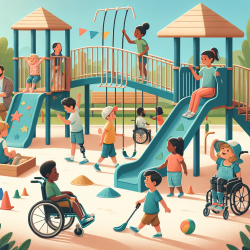Introduction
In recent years, the transition to adulthood for autistic young adults has become a focal point for researchers and practitioners alike. A pivotal study titled "Social Capital and Autism in Young Adulthood: Applying Social Network Methods to Measure the Social Capital of Autistic Young Adults" by McGhee Hassrick et al. (2020) sheds light on the potential of social network analysis in understanding and enhancing the social capital of autistic individuals. This blog explores how practitioners can apply the findings of this research to improve outcomes for autistic young adults.
The Importance of Social Capital
Social capital, which encompasses the networks of relationships among people who live and work in a particular society, is crucial for accessing resources and support. For autistic young adults, social capital can significantly impact key adult outcomes such as quality of life, mental health, employment, and independence. However, many autistic individuals face social isolation, which limits their access to these critical resources.
Applying Social Network Analysis
The study by McGhee Hassrick et al. (2020) introduces innovative methods for measuring the social networks of autistic young adults. By employing egocentric and duocentric network analyses, the researchers were able to map out the social ecosystems of these individuals, highlighting the types of support they receive from their networks. This approach provides a comprehensive view of the social capital available to autistic young adults and identifies potential areas for intervention.
Key Findings and Implications for Practitioners
- Network Size and Diversity: The study found that autistic young adults often have smaller and less diverse networks. Practitioners can use this information to design interventions that encourage the expansion of social networks, fostering connections beyond family and close friends.
- Role of Family: Family members play a significant role in the networks of autistic young adults. Practitioners should engage families in interventions, leveraging their influence to connect young adults with broader community resources.
- Gender Differences: The study noted variations in social networks based on gender, with autistic women often having more diverse networks. Practitioners should consider gender-specific strategies to support network development.
Encouraging Further Research
While the study provides valuable insights, it also highlights the need for further research to explore the impact of social networks on the long-term outcomes of autistic young adults. Practitioners are encouraged to participate in or initiate studies that build on this foundational work, exploring how network interventions can be tailored to individual needs.
Conclusion
The application of social network analysis in the field of autism offers promising avenues for enhancing the social capital and, consequently, the outcomes of autistic young adults. By understanding and leveraging the social networks of these individuals, practitioners can design more effective interventions that promote independence and integration into society.
To read the original research paper, please follow this link: Social Capital and Autism in Young Adulthood: Applying Social Network Methods to Measure the Social Capital of Autistic Young Adults.










